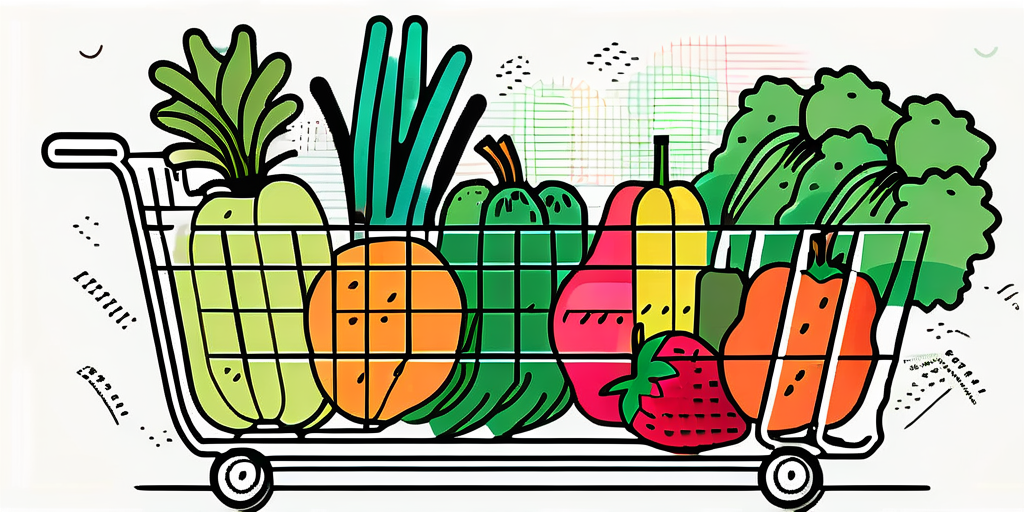Maintaining a healthy lifestyle doesn't have to break the bank. With the right knowledge and planning, it is entirely possible to eat nutritiously while staying within budget. In this article, we will explore various practical tips and tricks to help you prioritize your health without compromising your finances.
Understanding the Basics of Nutrition
Before diving into the specifics, let's first understand the importance of nutrition for overall well-being. A balanced diet is essential for providing our bodies with the necessary nutrients to function optimally. From boosting immunity to supporting growth and development, a well-rounded diet sets the foundation for good health.
When we talk about nutrition, we're referring to the process of obtaining and utilizing food for growth, repair, and maintenance of our bodies. It's not just about eating to satisfy hunger; it's about nourishing ourselves with the right combination of nutrients to thrive.
A balanced diet ensures that you receive all the essential nutrients, including carbohydrates, proteins, fats, vitamins, and minerals, in adequate proportions. These nutrients work together to maintain proper bodily functions, supporting everything from cell regeneration to energy production.
Carbohydrates are the body's primary source of energy. They provide fuel for physical activity, brain function, and organ function. Good sources of carbohydrates include whole grains, fruits, and vegetables.
Proteins are the building blocks of our bodies. They are essential for growth, repair, and maintenance of tissues, muscles, and organs. Lean meats, fish, eggs, legumes, and dairy products are excellent sources of protein.
Fats are often misunderstood but are crucial for our health. They provide energy, help absorb fat-soluble vitamins, and support brain function. Healthy fats can be found in avocados, nuts, seeds, and olive oil.
Vitamins and minerals are micronutrients that our bodies need in small amounts but play significant roles in various bodily functions. They are involved in everything from immune function to bone health. Fruits, vegetables, whole grains, and dairy products are rich sources of vitamins and minerals.
Importance of Balanced Diet
A balanced diet not only provides us with the necessary nutrients but also helps prevent chronic diseases such as heart disease, diabetes, and obesity. It supports a healthy weight, reduces the risk of nutrient deficiencies, and promotes overall well-being.
When we consume a variety of foods from different food groups, we ensure that our bodies receive a wide range of nutrients. This diversity helps optimize our health and reduces the chances of nutrient imbalances or deficiencies.
Additionally, a balanced diet can positively impact our mental health. Certain nutrients, such as omega-3 fatty acids found in fatty fish, have been linked to improved mood and reduced risk of depression. Eating a variety of nutrient-dense foods can contribute to better mental well-being.
Nutrient-Dense Foods Vs. Empty-Calorie Foods
When it comes to healthy eating on a budget, it's crucial to make smart food choices. Nutrient-dense foods pack a punch in terms of vitamins and minerals per calorie, making them an excellent value for your money. Fresh fruits, vegetables, lean proteins, and whole grains are prime examples of nutrient-dense foods that should be at the core of your diet.
Not only do nutrient-dense foods provide essential nutrients, but they also often contain fiber, which aids in digestion and helps us feel full and satisfied. This can be particularly helpful for weight management and preventing overeating.
On the flip side, empty-calorie foods offer little to no nutritional value and can quickly deplete your budget. These include sugary beverages, heavily processed snacks, and pre-packaged convenience foods. While indulging in these treats occasionally is fine, minimizing their consumption can help stretch your budget further.
By focusing on nutrient-dense foods, you can make the most of your food choices, ensuring that you get the most nutritional bang for your buck. It's about nourishing your body with foods that provide the essential nutrients it needs to thrive.
Planning Your Meals for the Week
Meal planning is a powerful tool that empowers you to take control of your nutrition and finances. By dedicating some time to strategize your meals for the week, you can avoid impulse purchases and make healthier choices while saving both time and money.

When you plan your meals ahead of time, you give yourself the opportunity to explore new recipes and flavors. This can be an exciting adventure as you search for inspiration from different cuisines and experiment with ingredients you may not have tried before. Imagine the satisfaction of creating a delicious and nutritious meal that you and your loved ones can enjoy together.
Not only does meal planning help you eat healthy, but it also reduces food waste. By planning your meals in advance, you can create shopping lists tailored to your needs, preventing overbuying and potentially throwing away unused ingredients. This not only benefits your wallet but also the environment, as reducing food waste is an important step towards sustainability.
In addition to saving money and reducing waste, meal planning streamlines your cooking process. With pre-planned recipes and ingredients on hand, you'll be less likely to opt for expensive takeout or unhealthy convenience foods on busy nights. Instead, you can look forward to coming home to a well-stocked kitchen and a clear plan for a delicious homemade meal.
Benefits of Meal Planning
Meal planning offers a multitude of benefits beyond just saving time and money. It can also help you achieve your health and fitness goals. By intentionally selecting nutritious recipes and incorporating a variety of fruits, vegetables, whole grains, and lean proteins into your meals, you can ensure that you are providing your body with the essential nutrients it needs to thrive.
Furthermore, meal planning can be a great way to involve your family in the decision-making process. By including everyone's preferences and dietary restrictions, you can create a sense of unity and excitement around mealtime. It can also be an opportunity to teach children about healthy eating habits and the importance of planning and preparing meals.
How to Plan Your Meals Effectively
Start by setting aside a specific time each week to plan your meals. Consider your schedule, dietary preferences, and any upcoming events that may influence your meal choices. This dedicated time allows you to focus on creating a well-balanced and enjoyable meal plan that suits your needs.
Look for budget-friendly recipes online or in cookbooks, and make note of the ingredients you'll need. Exploring different sources of inspiration can introduce you to new cooking techniques and flavors. You may discover a hidden talent for creating culinary masterpieces or uncover a new favorite dish that becomes a staple in your meal rotation.
Once you have your recipes selected, create a detailed shopping list. Organize it by categories such as produce, proteins, and pantry staples. This organization not only makes your shopping trip more efficient but also ensures that you don't forget any essential ingredients. Stick to your list when shopping to avoid temptations and unnecessary purchases, staying focused on your meal plan and your budget.
Remember, meal planning is a flexible process that can be adjusted to fit your lifestyle. You can choose to plan for the entire week or just a few days at a time. The key is to find a routine that works for you and allows you to enjoy the benefits of meal planning without feeling overwhelmed.
Smart Grocery Shopping Strategies
Maximizing your grocery store visits through smart strategies is key to eating healthy on a budget. By adopting a few techniques, you can make the most out of your shopping trips and stretch your dollars further.
When it comes to grocery shopping, one of the most effective strategies is making a shopping list. A shopping list is your best ally when navigating the grocery aisles. It keeps you focused, prevents you from overspending, and ensures you have everything you need. But creating a shopping list goes beyond simply jotting down items.
Be sure to consult your meal plan and cross-reference it with your pantry to avoid unnecessary duplicates. This step not only helps you avoid buying items you already have but also allows you to plan your meals efficiently. By knowing what ingredients you already possess, you can create a more accurate and concise shopping list.
Additionally, consider organizing your list according to the store's layout. Group items that are commonly found together to minimize backtracking and save time. For example, if you know that the dairy section is located at the back of the store, make sure to list all your dairy products together. This strategic approach not only streamlines your shopping experience but also reduces the chances of impulse purchases.
Decoding Nutrition Labels
Understanding nutrition labels is essential for making informed buying decisions. While packaged foods tend to be more expensive and less healthy than fresh alternatives, there may be times when you need to opt for convenience. In such cases, being equipped with the knowledge of reading and interpreting nutrition labels becomes invaluable.
When analyzing nutrition labels, pay attention to serving sizes, as the listed nutritional information is typically based on these portions. It is important to be aware of how much you are consuming and adjust the values accordingly. Comparing the content of saturated fats, added sugars, and sodium between different products can help you make the healthiest choice within your budget.
Moreover, understanding the ingredients list is equally important. Familiarize yourself with common additives, preservatives, and artificial sweeteners, as they can have long-term effects on your health. By being aware of what goes into your food, you can make more conscious decisions and opt for products that align with your dietary preferences and goals.
By adopting these smart grocery shopping strategies, you can make your trips to the grocery store more efficient, cost-effective, and health-conscious. Remember, a little planning and knowledge can go a long way in ensuring that you make the most out of your shopping experience.
Preparing Healthy Meals at Home
Cooking meals at home not only allows you to control the quality and nutritional content of your food but also saves your hard-earned money. With some creativity and the right techniques, you can whip up delicious and nutritious meals that won't break the bank.

When it comes to preparing healthy meals at home, there are various cooking techniques you can utilize to enhance flavor without relying on excessive oil or butter. Opting for cooking methods that require less added fat, such as baking, grilling, steaming, and roasting, can help you create healthier dishes. These techniques not only reduce the calorie content of your meals but also allow the natural flavors of the ingredients to shine through.
Experimenting with herbs, spices, and natural marinades is another way to add depth and variety to your dishes while keeping them healthy. Herbs like basil, thyme, and rosemary can elevate the taste of your meals, while spices such as cumin, paprika, and turmeric can add a burst of flavor. Natural marinades made with ingredients like lemon juice, garlic, and olive oil can tenderize meats and infuse them with delicious flavors.
In addition to choosing the right cooking techniques and flavor enhancers, another tip for preparing healthy meals at home is to consider batch cooking and freezing leftovers. This not only saves time but also prevents you from resorting to expensive takeout when convenience is paramount. By cooking larger portions and freezing the leftovers in individual portions, you can have ready-to-eat meals on hand for those busy days when cooking from scratch seems impossible. This way, you can still enjoy a nutritious homemade meal without the hassle.
Quick and Easy Healthy Recipes
When it comes to finding quick and easy healthy recipes, the options are endless. There are numerous websites, cooking blogs, and even social media platforms that are treasure troves of budget-friendly recipes. These resources offer a wide range of recipes that are simple, with minimal ingredients and preparation time.
One great tip is to look for versatile recipes that use common pantry staples. This allows for flexibility in your meal planning and reduces the need for frequent grocery store visits. Recipes that utilize ingredients like canned beans, whole grains, frozen vegetables, and spices can help you create delicious and nutritious meals without breaking the bank.
Whether you're in the mood for a hearty soup, a flavorful stir-fry, or a refreshing salad, there are plenty of quick and easy healthy recipes available to suit your taste preferences. With a little bit of research and experimentation, you can find recipes that fit your dietary needs and culinary skills.
Saving Money on Healthy Foods
Beyond planning and shopping, additional savings can be achieved by adopting a few strategies when purchasing healthy foods. With some forward thinking and awareness, you can make the most of your budget without sacrificing nutrition.

Buying in Bulk
Purchasing non-perishable items, such as grains, legumes, and spices, in bulk quantities can result in significant savings over time. Many stores offer bulk bins where you can purchase just the amount you need, reducing packaging waste and allowing for better portion control.
Consider joining a wholesale club or exploring online options to access wholesale prices for staple items. Splitting the cost and quantity with friends or family members can further maximize your savings.
Seasonal and Local Produce
Seasonal and locally sourced produce tends to be less expensive and fresher than imported alternatives. Visit local farmers' markets or consider joining a community-supported agriculture program to access affordable, in-season fruits and vegetables. These options not only support local farmers but also provide you with the best possible nutrition.
Eating healthy on a budget is entirely achievable with the right approach. By understanding nutrition, planning meals, shopping smartly, and adopting cost-effective cooking methods, you can prioritize your health without straining your finances. With a little practice and creativity, you'll soon find that a nutritious and budget-friendly diet is well within reach.




